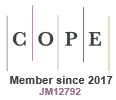Just Accepted
This article has been peer reviewed and accepted for publication. It is in production and has not been edited, so may differ from the final published form.
Adaptability Evaluation and Germplasm Filtration of Aegilops tauschii in Glasshouse on the Qinghai-Tibet Plateau
Abstract
Context: Aegilops tauschii is an important germplasm resource to improve common wheat, which is less used in Qinghai-Tibet Plateau. Aim: To select Aegilops tauschii germplasm resource that might adapt to the climate of Qinghai-Tibet Plateau in the future and remain eminent agronomic trait. Methods: Cultivated three experimental groups (JA, JB and JC) and each with 177 accessions from the world in glasshouse which simulated the temperature and humidity of manufacturing season in Qinghai-Tibet Plateau so that the harvest rate and important agronomic traits can be tested. Key Results: (1) Long term low temperature process was inconspicuous toward the accomplishment of its life circle. 36.72%-42.37% accessions can complete the life circle and there accessions were fertile in all experimental groups. (2) Low temperature and longer time process created positive effects on plant traits of Aegilops tauschii but negative effects on grain phenotypic traits. (3) Compared to the temperature, the humidity was a more important environmental factor to the limitations of its plant traits and the improvement of its grain phenotypic traits. (4) Long term low temperature and low temperature high humidity conditions seemed to be more favorable for the expression of 1Dx5 + 1Dy10 subunits. Conclusions: 57 from 177 accessions were selected that might be suitable for future cultivation of Aegilops tauschii’s germplasm resources on the Qinghai-Tibet Plateau, and 10 accessions had excellent agronomic traits. Implications: These findings laid the ground for the breed of Aegilops tauschii, which remains excellent agronomic traits and can be cultivated in Qinghai-Tibet Plateau.
CP25056 Accepted 14 May 2025
© CSIRO 2025



